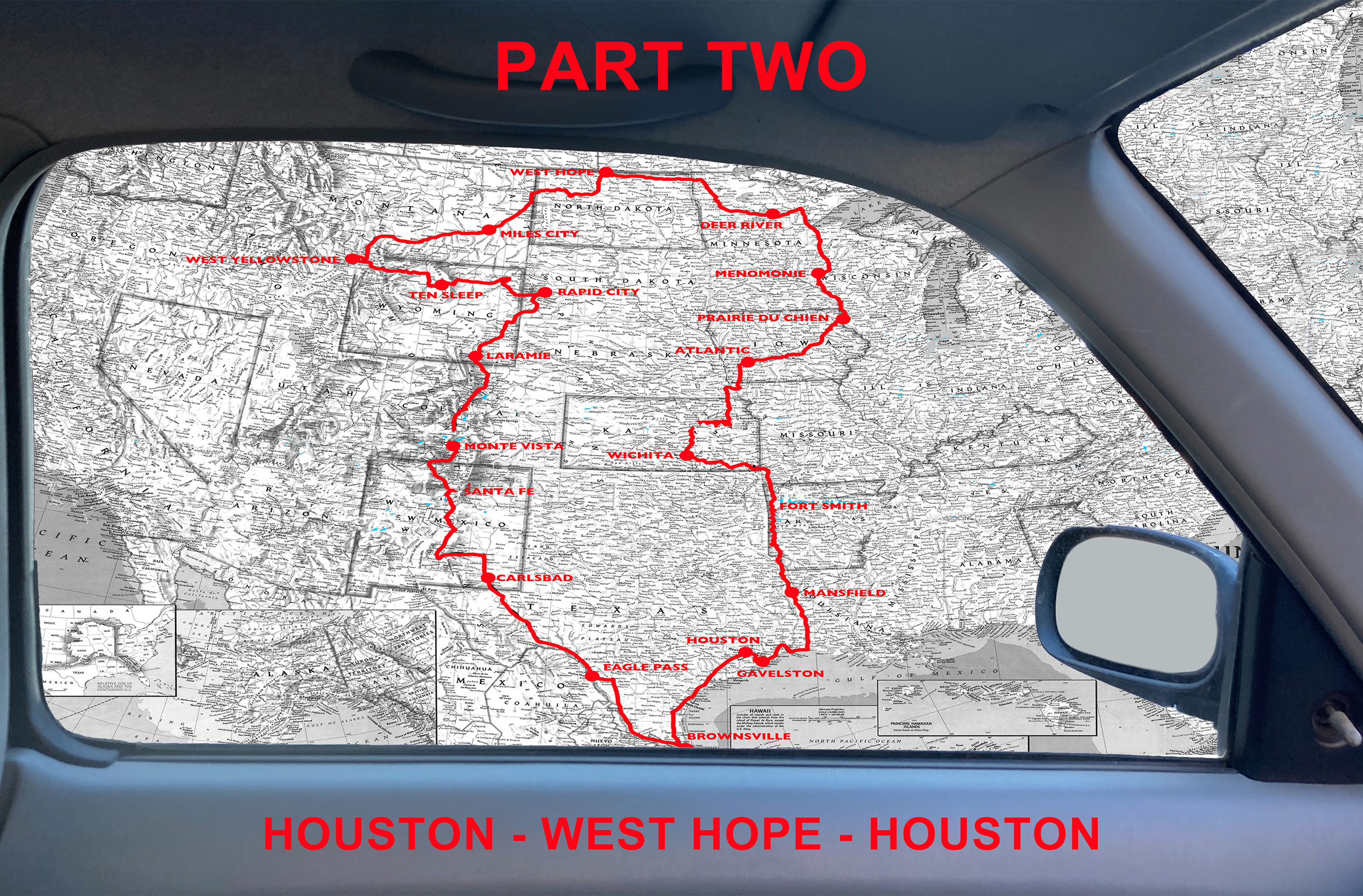For the project 'On The Road, Too' , and new book: ‘On the Road, Too, Part I and II’, Dutch artist Peter Spaans (Amsterdam, 1953) and his American friend, Dan Schmidt, (New York, 1957) drove 6,100 miles (9800 km kilometers) from Houston, Texas to the US/Mexican border at Brownsville, Texas, and from there to the US/Canadian border at Dunseith, North Dakota, and then back to Houston in 20 days. They traveled as much as possible on older US National highways and on State roads, rather than on the Eisenhower Interstate Highway System. They knew that on such a journey they would see the country; the cities and towns, as well as the wide open spaces of the west, rather than pass through it on the Interstate Highways. Peter Spaans made 10,000 photographs during this trip. Most of the photographs were taken between 10 AM and 5 PM, as daylight is brightest then. Mr. Spaans eventually chose 1000 photographs, one image for each page of the book. On The Road, Too Part II is an extended, raw, uncensored, and uncommon visual portrait of America seen over 20 consecutive days from the vantage point of their car. Peter Spaans always photographed from inside of their moving car. Peter Spaans generally captured his images through the open window on the right side of the vehicle. He also took photographs through the windshield, and from the backseat of the car; capturing images on both sides of the road, depending on the position of the sun, and always through the open window. Day in and day out he focused on fixed points, such as the grandness of the natural countryside, or power lines, gas stations, motels, churches, and restaurants. He pointed his camera at houses and factories, both abandoned and boarded up or inhabited and full of life. The journey by car or road trip is a quintessential American experience, one that generations of Americans have undertaken. Peter Spaans and Dan Schmidt were inspired in part by Jack Kerouac’s novel On The Road first published 58 years ago in 1957. They also looked back to James Agee’s and Walker Evans’ collaborative effort Let Us Now Praise Famous Men. One of the stories of the One the Road, Too project is the transformation of the landscape by successive generations of Americans. As the photographs depict, each generation leaves both their masterpieces and their ruins behind. Creative destruction is heralded as the vital energy of American capitalism; the old and inefficient being constantly replaced by something new. The resulting destruction is a price that is paid for progress. All across the United States they observed a phenomenon that has been transforming the American landscape for generations; farmland giving way to residential development. Nineteenth century wooden barns, silos and farmhouses now stand in close proximity to large contemporary homes as agricultural land is turned into suburban housing tracts.

